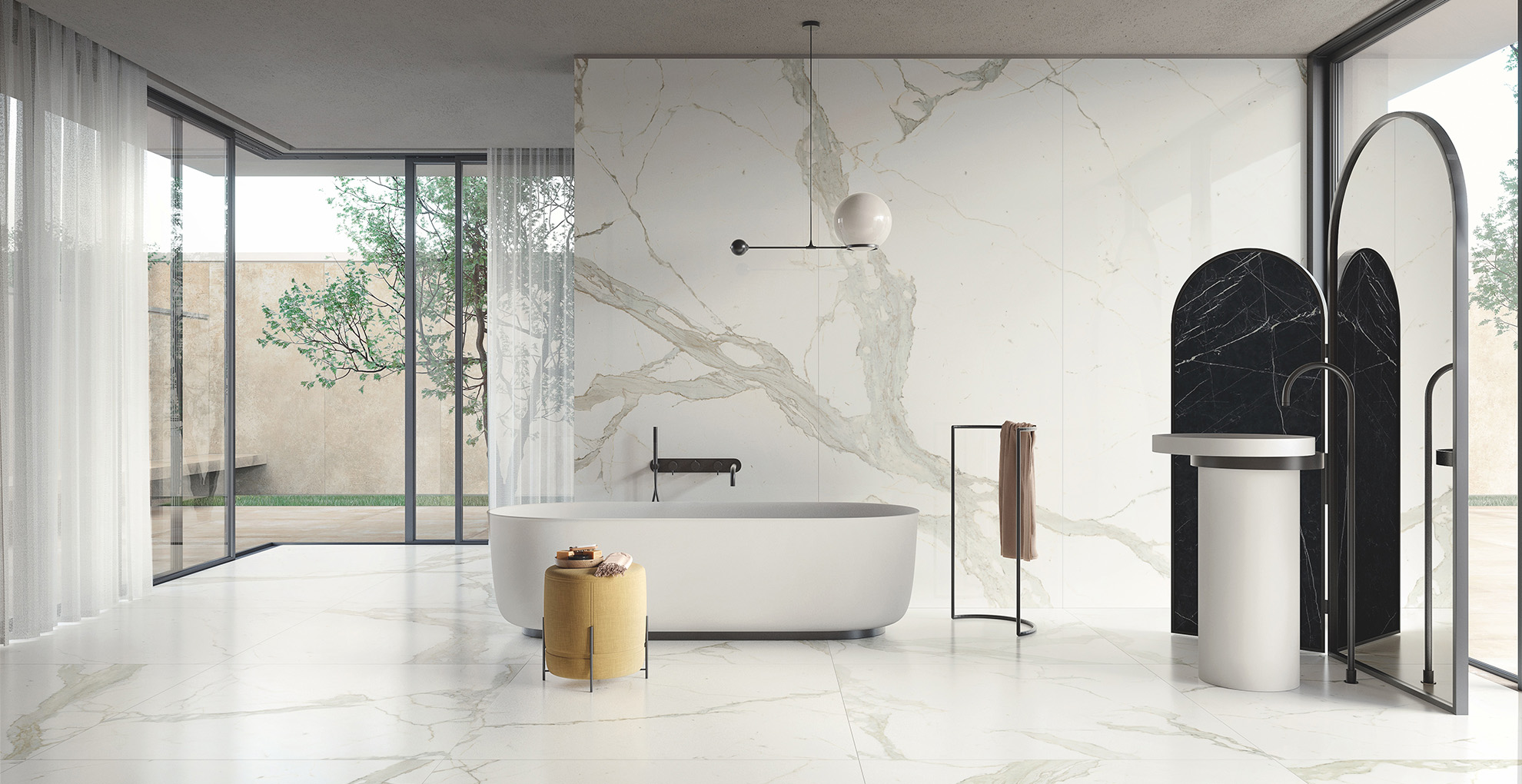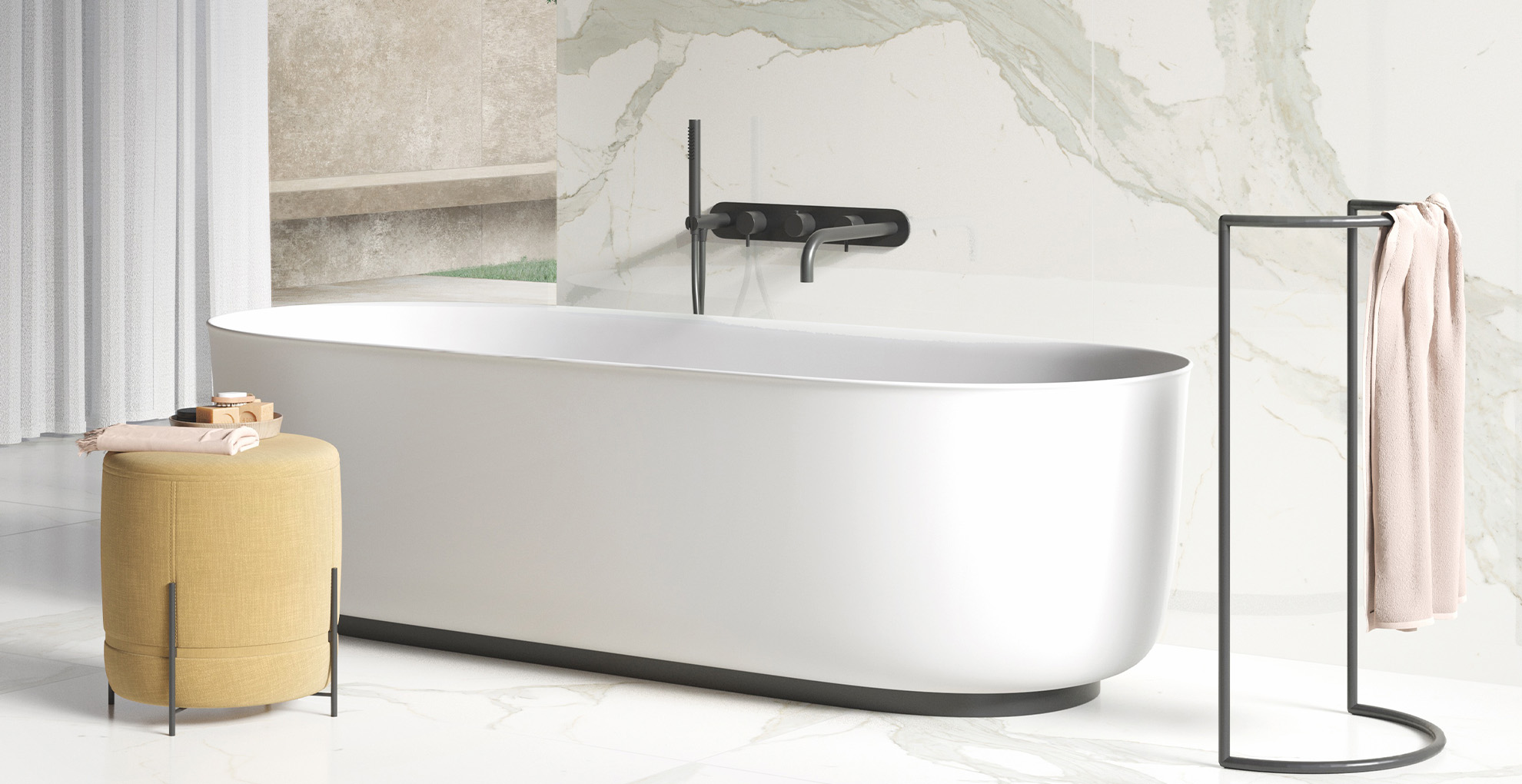Capture the Magic of Marble, With the Practicality of Porcelain Stoneware
Ariostea’s range of porcelain stoneware slabs are the ideal alternative to natural stone when performance and durability count

There’s no denying the beauty of marble — it’s a material with timeless good looks that also manages to capture the mood of design trends at any given time. Yet, when it comes to specifying it for a project, it has challenges compared to modern materials that designers and architects now favour.
The good news? You can have the best of both worlds. Ariostea’s porcelain stoneware slabs are the perfect example of where forms meets function — after all, its designers have recreated some of the rarest and most precious of Italian marbles as ceramics surfaces with painstaking detail.
This all means that not only can architects, designers and design-lovers specify marble-style slabs that look and feel as good as the real thing with ease, but they can benefit from the practical benefits of porcelain stoneware, too. Here’s what makes Ariostea’s surfaces stand apart from the crowd.
In the detail

Calacatta Macchia Vecchia
Creating such a sense of marble’s natural quality is no small task, but in marks and veining, with its unpredictable nuances and imprecisions, Ariostea has breathed fresh life into the technical ceramic surface through careful, considered research into the stone. It’s a celebration of nature’s elegance, where beauty, technical innovation and sustainability come together to create porcelain stoneware surfaces suitable for high-end projects that value rediscovered classicism and contemporary luxury.
Some of Ariostea’s most popular varieties include Calacatta Macchia Vecchia — a recreation of a stone characterised by a rich network of gold and grey veins that form a dynamic and flowing pattern against a cream-white background. Bianco Calacatta is also very popular, with distinctive streaks ranging from grey to gold on a milky-white background. Bianco Statuario is a particularly timeless marble, with a bright, pure backdrop crisscrossed by striking grey veins that create unique and sophisticated patterns.
The perfect finish

Bianco Calacatta
But sight isn’t the only sense Ariostea’s porcelain stoneware appeals to. A variety of different finishes mean that not only can you customise the look of these ceramic surfaces, but also their tactility. Naturale, for example, creates a surface that most closely mirrors the stone of inspiration, while a choice like Lucidato enhances the uniqueness of the veining. Choose Prelucidato for a delicate and sophisticated reflection; Levigato Silk for a soft diffusion of light; and Soft for the most minimalist result for your surfaces.
Versatile style

Bianco Statuario
When it comes to putting Ariostea’s porcelain stoneware slabs to use, your imagination is the limit. Where supply can be an issue for natural stone, Ariostea offers a wide range of sizes to meet all design requirements, from the Classics 8mm thick range to large Ultra slabs, available in a vast variety of sizes at 6mm thicknesses.
It allows for sleek, minimalist projects, especially where the larger sizes are utilised, meaning minimal jointlines and spaces that feel expansive and uninterrupted.
Of course, they’re designed with versatile uses in mind, too. From floors and walls to even furniture, these porcelain stoneware slabs are an ideal material to allow your creative visions to come to life.
Find out more about Ariostea’s porcelain stoneware slabs.
The Livingetc newsletters are your inside source for what’s shaping interiors now - and what’s next. Discover trend forecasts, smart style ideas, and curated shopping inspiration that brings design to life. Subscribe today and stay ahead of the curve.
-
 These Clever Divided Organizers for Jeans and Jumpers Have Completely Transformed My "Chaos Wardrobe"
These Clever Divided Organizers for Jeans and Jumpers Have Completely Transformed My "Chaos Wardrobe"A step up from your standard storage bin, these ones keep each individual item of clothing nicely separated
-
 8 Outdated Flooring Trends You Should Leave in 2025 — They're Not the Way Forward for Cool, Design-Led Homes
8 Outdated Flooring Trends You Should Leave in 2025 — They're Not the Way Forward for Cool, Design-Led HomesWhy these familiar flooring choices are falling out of favour as interiors move towards warmth, texture, nature, and longevity